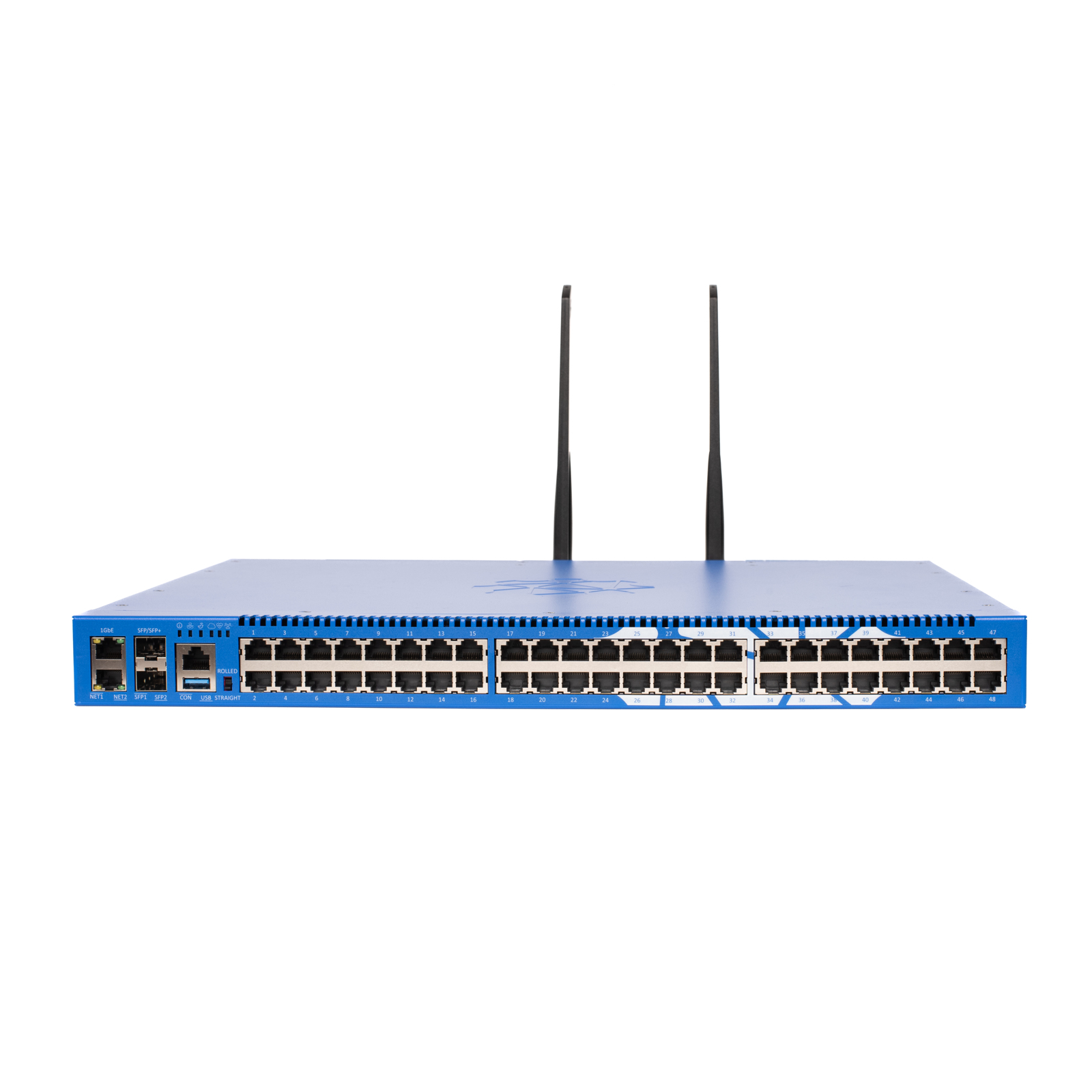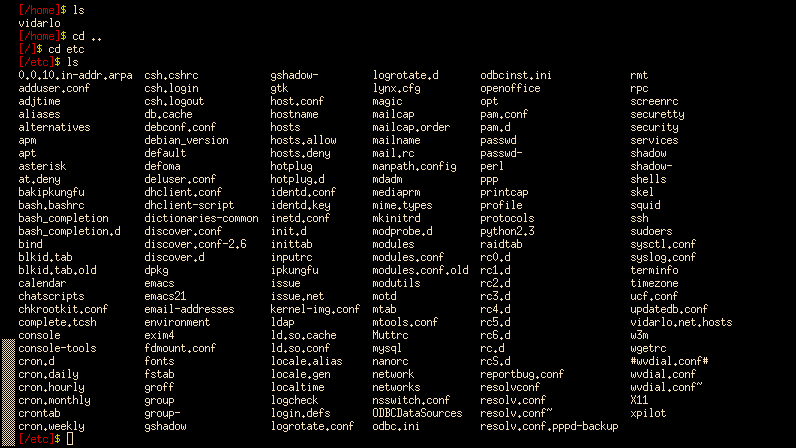|
Console Server
A terminal server connects devices with a serial port to a local area network (LAN). Products marketed as terminal servers can be very simple devices that do not offer any security functionality, such as data encryption and user authentication. The primary application scenario is to enable serial devices to access network server applications, or vice versa, where security of the data on the LAN is not generally an issue. There are also many terminal servers on the market that have highly advanced security functionality to ensure that only qualified personnel can access various servers and that any data that is transmitted across the LAN, or over the Internet, is encrypted. Usually, companies that need a terminal server with these advanced functions want to remotely control, monitor, diagnose and troubleshoot equipment over a telecommunications network. A console server (also referred to as console access server, console management server, serial concentrator, or serial console ... [...More Info...] [...Related Items...] OR: [Wikipedia] [Google] [Baidu] |
Serial Port
A serial port is a serial communication Interface (computing), interface through which information transfers in or out sequentially one bit at a time. This is in contrast to a parallel port, which communicates multiple bits simultaneously in Parallel communication, parallel. Throughout most of the history of personal computers, data has been transferred through serial ports to devices such as modems, computer terminal, terminals, various peripherals, and directly between computers. While interfaces such as Ethernet, FireWire, and USB also send data as a serial Stream (computing), stream, the term ''serial port'' usually denotes Computer hardware, hardware compliant with RS-232 or a related standard, such as RS-485 or RS-422. Modern consumer personal computers (PCs) have largely replaced serial ports with higher-speed standards, primarily USB. However, serial ports are still frequently used in applications demanding simple, low-speed interfaces, such as industrial automation sys ... [...More Info...] [...Related Items...] OR: [Wikipedia] [Google] [Baidu] |
DECSA
The PDP–11 is a series of 16-bit minicomputers originally sold by Digital Equipment Corporation (DEC) from 1970 into the late 1990s, one of a set of products in the Programmed Data Processor (PDP) series. In total, around 600,000 PDP-11s of all models were sold, making it one of DEC's most successful product lines. The PDP-11 is considered by some experts to be the most popular minicomputer. The PDP–11 included a number of innovative features in its instruction set and additional general-purpose registers that made it easier to program than earlier models in the PDP series. Further, the innovative Unibus system allowed external devices to be more easily interfaced to the system using direct memory access, opening the system to a wide variety of peripherals. The PDP–11 replaced the PDP–8 in many real-time computing applications, although both product lines lived in parallel for more than 10 years. The ease of programming of the PDP–11 made it popular for general-purpose ... [...More Info...] [...Related Items...] OR: [Wikipedia] [Google] [Baidu] |
Unix-like
A Unix-like (sometimes referred to as UN*X, *nix or *NIX) operating system is one that behaves in a manner similar to a Unix system, although not necessarily conforming to or being certified to any version of the Single UNIX Specification. A Unix-like Application software, application is one that behaves like the corresponding List of POSIX commands, Unix command or Unix shell, shell. Although there are general Unix philosophy, philosophies for Unix design, there is no technical standard defining the term, and opinions can differ about the degree to which a particular operating system or application is Unix-like. Some well-known examples of Unix-like operating systems include Linux, FreeBSD and OpenBSD. These systems are often used on servers as well as on personal computers and other devices. Many popular applications, such as the Apache HTTP Server, Apache web server and the Bash (Unix shell), Bash shell, are also designed to be used on Unix-like systems. Definition The Open ... [...More Info...] [...Related Items...] OR: [Wikipedia] [Google] [Baidu] |
Commodity Computer
Commodity computing (also known as commodity cluster computing) involves the use of large numbers of already-available computing components for parallel computing, to get the greatest amount of useful computation at low cost. This is a useful alternative to high-cost superminicomputers or boutique computers. Commodity computers are computer systems - manufactured by multiple vendors - incorporating components based on open standards. Characteristics Such systems are said to be based on standardized computer components, since the standardization process promotes lower costs and less differentiation among vendors' products. Standardization and decreased differentiation lower the switching or exit cost from any given vendor, increasing purchasers' leverage and preventing lock-in. A governing principle of commodity computing is that it is preferable to have more low-performance, low-cost hardware working in parallel (scalar computing) (e.g. AMD x86 CISC) than to have fewer high-per ... [...More Info...] [...Related Items...] OR: [Wikipedia] [Google] [Baidu] |
Out-of-band Management
In systems management, out-of-band management (OOB; also lights-out management or LOM) is a process for accessing and managing devices and infrastructure at remote locations through a separate management plane from the production network. OOB allows a system administrator to monitor and manage servers and other network-attached equipment by remote control regardless of whether the machine is powered on or whether an OS is installed or functional. It is contrasted to ''in-band management'' which requires the managed systems to be powered on and available over their operating system's networking facilities. OOB can use dedicated management interfaces, serial ports, or cellular 4G and 5G networks for connectivity. Out-of-band management is now considered an essential network component to ensure business continuity and many manufacturers have it as a product offering. Out-of-band versus in-band By contrast, ''in-band management'' through VNC or SSH is based on in-band connectivit ... [...More Info...] [...Related Items...] OR: [Wikipedia] [Google] [Baidu] |
Telnet
Telnet (sometimes stylized TELNET) is a client-server application protocol that provides access to virtual terminals of remote systems on local area networks or the Internet. It is a protocol for bidirectional 8-bit communications. Its main goal was to connect terminal devices and terminal-oriented processes. The name "Telnet" refers to two things: a protocol itself specifying how two parties are to communicate and a software application that implements the protocol as a service. User data is interspersed in-band with Telnet control information in an 8-bit byte oriented data connection over the Transmission Control Protocol (TCP). Telnet transmits all information including usernames and passwords in plaintext so it is not recommended for security-sensitive applications such as remote management of routers. Telnet's use for this purpose has waned significantly in favor of SSH. Some extensions to Telnet which would provide encryption have been proposed. Description The ... [...More Info...] [...Related Items...] OR: [Wikipedia] [Google] [Baidu] |
Terminal Emulator
A terminal emulator, or terminal application, is a computer program that emulates a video terminal within some other display architecture. Though typically synonymous with a shell or text terminal, the term ''terminal'' covers all remote terminals, including graphical interfaces. A terminal emulator inside a graphical user interface is often called a terminal window. A terminal window allows the user access to a text terminal and all its applications such as command-line interfaces (CLI) and text user interface (TUI) applications. These may be running either on the same machine or on a different one via telnet, ssh, dial-up, or over a direct serial connection. On Unix-like operating systems, it is common to have one or more terminal windows connected to the local machine. Terminals usually support a set of escape sequences for controlling color, cursor position, etc. Examples include the family of terminal control sequence standards that includes ECMA-48, ANSI X3.64, ... [...More Info...] [...Related Items...] OR: [Wikipedia] [Google] [Baidu] |
Modem
The Democratic Movement (, ; MoDem ) is a centre to centre-right political party in France, whose main ideological trends are liberalism and Christian democracy, and that is characterised by a strong pro-Europeanist stance. MoDem was established by François Bayrou to succeed the Union for French Democracy (UDF) and contest the 2007 legislative election, after his strong showing in the 2007 presidential election. Initially named the Democratic Party (''Parti démocrate''), the party was renamed "Democratic Movement", because there was already a small Democratic Party in France. MoDem secured an agreement with La République En Marche! (LRM) — later Renaissance (RE) — in the 2017 legislative election after Bayrou had endorsed the candidacy of Emmanuel Macron in February. The two parties have since been in alliance, as of late named Ensemble. The party's founder and leader Bayrou has served as Prime Minister of France since December 2024. History Background MoDem tr ... [...More Info...] [...Related Items...] OR: [Wikipedia] [Google] [Baidu] |
COM Port Redirector
A virtual serial port is a software representation of a serial port that either does not connect to a real serial port, or adds functionality to a real serial port through software extension. Software virtual ports A software-based virtual serial port presents one or more virtual serial port identifiers on a PC which other applications can see and interact with as if they were real hardware ports, but the data sent and received to these virtual devices is handled by software that manipulates the transmitted and received data to grant greater functionality. Operating systems usually do not provide virtual serial port capability. Third-party applications can add this ability, such as the open-sourccom0com freewarHW VSP3 or the commerciaVirtual Serial Port Driver Some virtual serial ports emulate all hardware serial port functionality, including all signal pin states, and permit a large number of virtual ports in any desired configuration. Others provide a limited set of capabilit ... [...More Info...] [...Related Items...] OR: [Wikipedia] [Google] [Baidu] |
COM (hardware Interface)
COM (communication port) is the original, yet still common, name of the serial port interface on IBM PC compatible, PC-compatible computers. It can refer not only to physical ports, but also to Hardware emulation, emulated ports, such as ports created by Bluetooth or USB adapters. History The name for the COM port started with the original IBM PC. IBM had called the four well-defined communication RS-232 ports the "COM" ports, starting from COM1 through COM4. In BASICA and PC DOS you can open these ports as "COM1:" through "COM4:", and all PC compatibles using MS-DOS used the same denotation. Most PC-compatible computers in the 1980s and 1990s had one or two COM ports. By 2007, most computers shipped with only one or no physical COM ports. Today, few consumer-grade PC-compatible computers include COM ports, though some of them do still include a COM Pin header, header on the motherboard. After the RS-232 COM port was removed from most consumer-grade computers, an external USB-t ... [...More Info...] [...Related Items...] OR: [Wikipedia] [Google] [Baidu] |
Console Server
A terminal server connects devices with a serial port to a local area network (LAN). Products marketed as terminal servers can be very simple devices that do not offer any security functionality, such as data encryption and user authentication. The primary application scenario is to enable serial devices to access network server applications, or vice versa, where security of the data on the LAN is not generally an issue. There are also many terminal servers on the market that have highly advanced security functionality to ensure that only qualified personnel can access various servers and that any data that is transmitted across the LAN, or over the Internet, is encrypted. Usually, companies that need a terminal server with these advanced functions want to remotely control, monitor, diagnose and troubleshoot equipment over a telecommunications network. A console server (also referred to as console access server, console management server, serial concentrator, or serial console ... [...More Info...] [...Related Items...] OR: [Wikipedia] [Google] [Baidu] |




